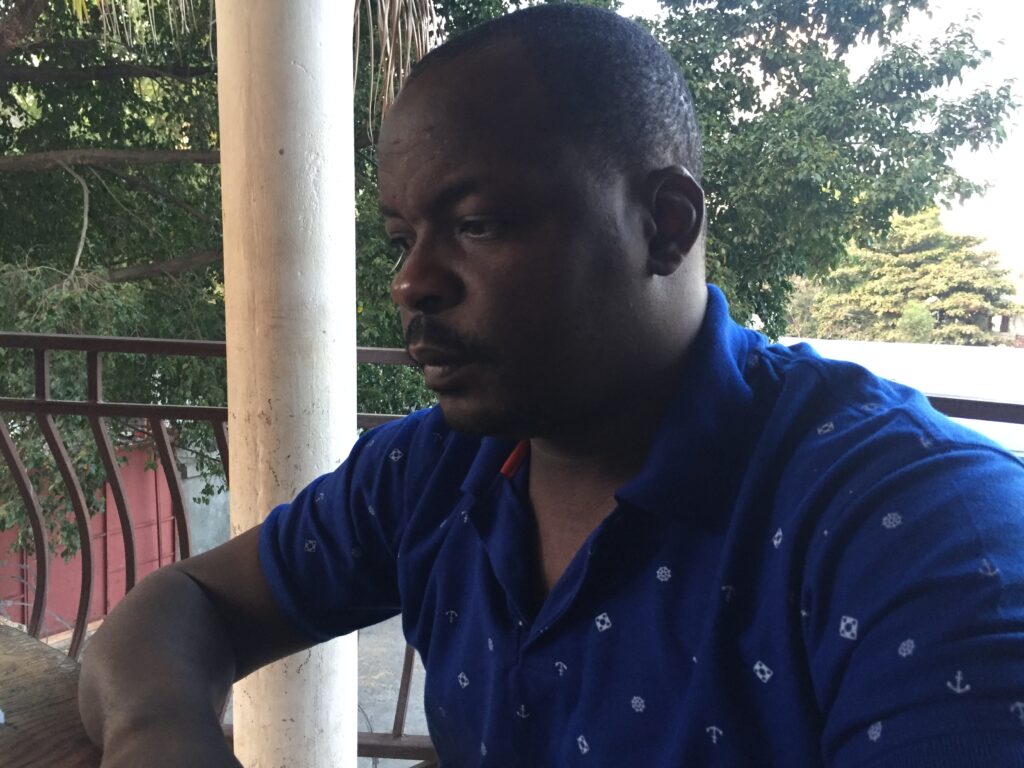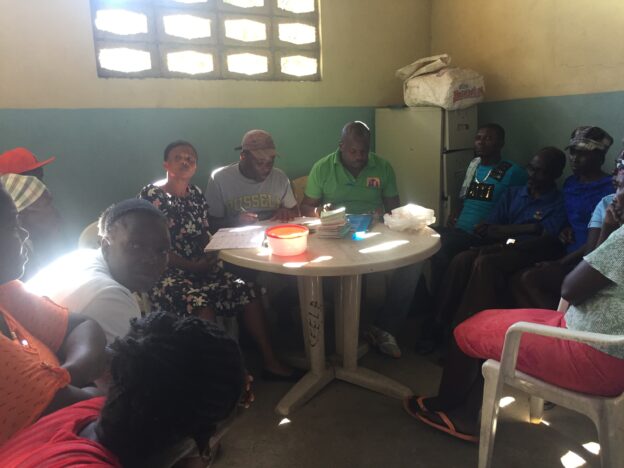When Fonkoze first established the CLM program, it expected it to be just the first of the series of services the institution would provide as it accompanied families living in ultra-poverty on their way forward. CLM families would graduate from the program into Fonkoze’s credit programs, starting small and then moving on to higher levels. Fonkoze sometimes referred to the progression as the “Staircase out of Poverty.”
The problem was that it didn’t always happen that way. Many CLM graduates either could not or did not choose to go on to credit programs. Among other things, the CLM team’s commitment to going into the farthest reaches of each region to find the poorest families wherever they live meant that it would work in places that its sister organization’s credit teams could not serve. CLM members were spending 18 months in the program, building up initial livelihoods, and then losing access to accompaniment. The CLM team felt strongly that members needed to be graduating from CLM into some structure, but it didn’t at first know what kind of structure might be useful.
In 2015 and 2016, the program started experimenting with Village Savings and Loan Associations. (See: www.vsla.net.) It was felt that by grouping members into associations that push them to save while providing access to small loans, the program could help them support themselves and one another for the long term. The CLM team now organizes VSLAs in all the neighborhoods it works in. The associations have proven extremely popular among CLM members, and the CLM field staff has found them to be a useful teaching tool.
But they are not without challenges. Even though they are designed to require only minimal skills of their members, they depend on having a small leadership group that has skills beyond what almost any CLM members possesses. In order to establish them in all neighborhoods, the team was forced to integrate a few community leaders into each. But this can have the effect of reinforcing the community’s traditional power relationships.
And this is no mere theoretical problem. Since the good functioning of the associations depends on members’ oversight over a transparent process, reinforcing traditional power relationships can leave members lacking the confidence that they would need to feel entitled to criticize their leaders, and so the leaders can feel enabled to act without constraint. Some leaders end up taking advantage of their position to turn the VSLA’s resources to their own benefit, preventing CLM members from benefiting as much as they should.
And the associations are victims of their own popularity, too. They are designed to function for a year, and at the end of the year all members receive their savings and their share of any interest the association earns. Then a new cycle starts. But community members who are not part of the program like what they see, and they decide to join. Since details of each association’s rules are determined by vote, CLM members can be priced out. VSLAs can survive for several year-long cycles, but CLM-member participation can tend to decrease. Some existing associations no longer serve the population they were implemented to serve.
And the turnover brings another problem as well. The changes in membership that go with each cycle means a shared understanding of the process continually decreases. And as participants understand less about their associations, the associations function less well.

In the fall, the CLM team appointed a full-time VSLA specialist with a dual mission: 1. to assess individual VSLAs and help them resolve any problems and 2. to lead the CLM team’s development of a strategy to provide VSLAs with sustainable, long-term support. His name is Martinière Jasmin, and he brings nine years of experience as a CLM case manager and a track record of success at helping the members he has served make good use of their VSLAs.
He and I went together to a VSLA meeting in Pak Kabrit, near downtown Laskawobas. The association there is, in a sense, a well-established VSLA. The day we attended they were closing their third cycle, so they’ve been at for three years. The day’s work was to calculate and make the appropriate pay-out to each member.
But there were problems. Of 68 members, 44 owed the association money. They had loans they hadn’t finished repaying. Calculating pay-outs involved subtracting each person’s balance from their savings. That was difficult work, but it was, in a way, straightforward. The association’s records, however, showed that not all members had paid interest on their loans, and almost none had been charged penalties for late payments. All this is central to how the associations are supposed to earn money that can be paid out as profit to members.
And it was hard to be sure since the VSLA’s secretary had changed since the association was established, and the current one had received no training at all. The leader who had maintained continuity was the president, and he was part of the problem. He owed a lot of money, and didn’t even attend the pay-out meeting. Worse than that, he had been using his prestige to convince other VSLA members to borrow money for him on their accounts, and several of the members who had debt reported that, in fact, the money was in his hands.
Martinière worked patiently and forcefully for over six hours as the he, the secretary, and the other members went through mixed-up, incomplete bookkeeping to audit each person’s account, eliminating as much as their debt as possible and figuring out what pay-out they were entitled to. They studied written records, but also depended on participants’ memories about transactions, both their own transactions and those of their fellow members. Since all transactions are made publicly, someone would usually remember. As members realized that Martinière was in no hurry, that he’d take all the time they needed to get things right, they joined a spirited collaboration. They started well before noon and finished early in the evening, by the light of a couple of cell-phones.
Remarkably, most of the group wants to participate in the next cycle. The chance to feel pressured to save continually and the opportunity to take out small loans now and again make it worth it to them, even if they are finding themselves defrauded out of some or all of the profit they should make. They are especially excited about the new training that Martinière will provide, ensuring that the upcoming cycle gets off to a good start. He wants them to understand how critical some of the VSLAs basic principles are: regular, attentive attendance; careful adherence to the basic recording keeping practices; and the willingness to pay all the charges the group’s own rules call for.
Martinière is determined to succeed. “VSLAs are just too useful to our members for us to give them up. And the members see that, too. When I think about what they put up with without losing their desire to continue, that motivates me to help them clear things up.”

Thank you for this excellent analysis. Very thoughtful as you talk about the challenges of keeping the very poorest in the groups. In Mali working with a similar impoverished population we vastly simplified the record keeping system by having everyone save the same amount or multiples of this amount for the entire cycle. We also introduced an oral recordkeeping system where everyone had a role in keeping records.
I would be happy to share ideas on how to address these issues. I could even come visit after my next visit to the Dominican Republic where I am working on savings group promotion with the CCT program there.